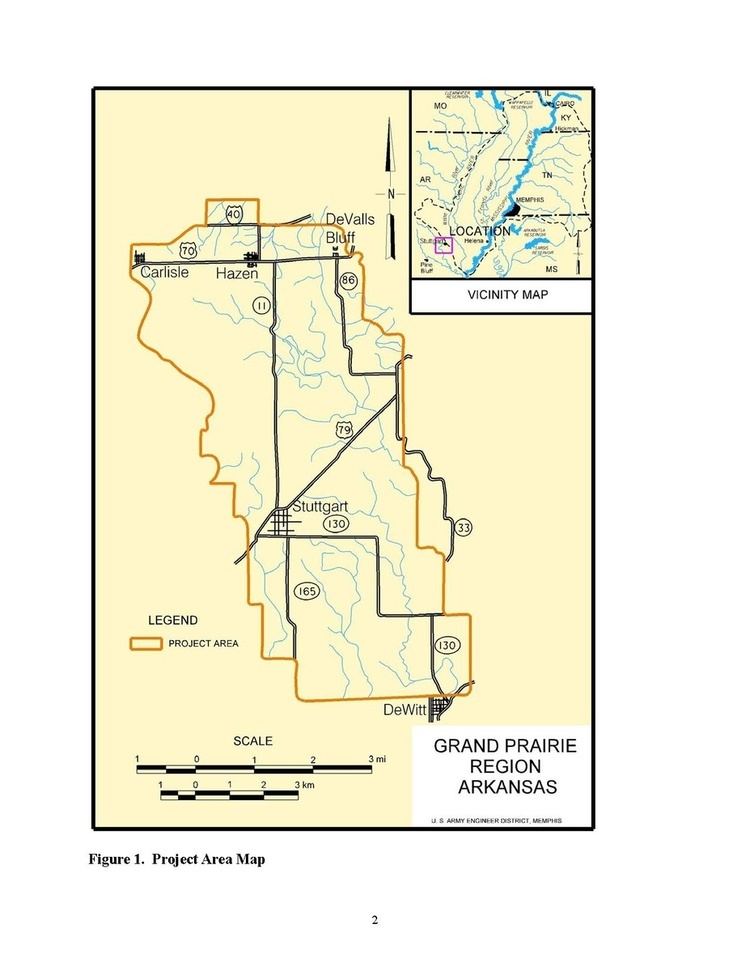Construction began 1950 | ||
 | ||
Capacity 1,640 cu ft (46 m) per second | ||
The Grand Prairie Area Demonstration Project is an interbasin transfer project to provide water to eastern Arkansas for the purposes of agricultural water supply, aquifer recharge, prairie and wetland restoration, water conservation and waterfowl management. The project, conceived by the US Army Corps of Engineers' Memphis District and approved by US Congress in 1950, generally involves the pumping of water from the White River near DeValls Bluff into pipelines and canals throughout Arkansas's Grand Prairie, specifically to farmers in Arkansas, Lonoke and Prairie counties. The new water source is intended to relieve groundwater pumping from the Alluvial and Sparta aquifers that underlie the Prairie.
Contents
History
Initially authorized by the Flood Control Act of 1950, the project received $6 million ($59.7 million in today's dollars) from Congress. The act has been in various stages of planning or design ever since. Deferred in 1980 due to a lack of a strong local sponsor, the Grand Prairie-White River Irrigation District was formed by local leaders to continue project development. In 1983, the Arkansas Soil and Water Conservation Commission requested the US Army Corps of Engineers Vicksburg District conduct a study to determine the economic feasibility of the project.
Opposition
The project has encountered significant delays from a variety of groups voicing opposition to the project, including environmentalists, farmers, landowners, taxpayers and duck hunters. The project was also delayed significantly following the discovery of the Ivory-billed woodpecker within the Cache River National Wildlife Refuge in 2004.
Current status
As of 2014, the lower half of the pump station has been constructed at DeValls Bluff. The White River Irrigation District has obtained subscribers to receive the water once pumping commences.
